Collecting and Connoisseurship in England before Charles I
Though there were royal and aristocratic collectors in the late sixteenth-century, they were not as dedicated or successful as the courtiers of Charles I’s reign. Before the Stuarts came to power, picture collecting and art connoisseurship was at a low ebb during the Tudor period.[1]In fact the idea of “fine art” or sensitivity to the aesthetic quality of pictures did not exist at all. During Henry VIII’s reign (reg. 1509-1547) for instance, painters were employed as propagandists; commissioning pictures was usually for an ulterior motive.[2]A good example is the beautiful Holbein portrait of Queen Christina of Denmark which was produced in 1538 so that the King could inspect the 16 year old woman as a marriage prospect. This picture was to pass through a number of hands before arriving in one of the greatest English collectors of all time, Thomas Howard, Earl of Arundel who was a true connoisseur of Holbein and owned the best collection of Holbeins in the country as we shall see.[3]It is a mark of how underdeveloped English connoisseurship was during the Tudor period that the first painting by Titian known to have reached England, and owned by Mary Tudor (reg 1553-1558) had little influence on either artistic practice or art appreciation.[4]This was progress though: it showed that an English monarch was prepared to import paintings from abroad, from Spain as in the case of Antonis Mor who painted the famous portrait of “Bloody Mary” in 1554. The propagandist function of pictures became more pronounced during Elizabeth I’s period (reg. 1558-1603) when images of her flooded the land, some cheap copies which prompted legal controls on the production of royal portraiture.[5]This glut also called for connoisseurship skills, separating copy from original, which would re-emerge in the next century when portraits at the Spanish royal collection were subject to the scrutiny of Velasquez who surprisingly proved fallible on one occasion when evaluating a new arrival from England.[6]Though Elizabeth is said to have had conversations with the miniaturist Nicholas Hilliard about painting, she could not be considered knowledgeable about art. This is true of her courtiers also, though some like Lord Cecil took some interest in acquiring paintings, due to a growing interest in Italian taste.[7]Unlike Charles I, Elizabeth seldom kept an eye on the international art market, though there was a rare exception. It is known that the Queen attempted to acquire an altarpiece of the Lamentation by the Flemish artist Quentin Massys, but her reason for desiring it are not known. She was unsuccessful and it was eventually purchased by the Antwerp Guild.
 |
| Daniel Mytens, Lord Arundel in His Sculpture Gallery, 1616, oil on canvas, 8 ½ x 50 inches, London, National Portrait Gallery (on loan to Arundel Castle) |
 |
| Quentin Metsys the Younger, Portrait of Elizabeth I (“The Sieve Portrait”), Pinacoteca Nazionale, Siena Italy. |
 |
| Quentin Metsys, Central panel of St John Altarpiece, 1507-08, Oil on wood, 260 x 504 cm, Koninklijk Museum voor Schone Kunsten, Antwerp. |
 |
| Anthonis Mor, Queen Mary Tudor of England, 1554, Oil on panel, 109 x 84 cm, Museo del Prado, Madrid. |
A Period of Transition: The Jacobean Era.
Though Elizabeth’s successor James I could not be considered an art connoisseur in any sense of the word, there are signs that taste and discernment burgeoned at his court. His consort, the Catholic Anne of Denmark was a great collector of pictures. Though we must be cautious in linking the Catholic faith with an informed appreciation of art, there is reason to believe that people of this time might have made such a connection. Anne was jeered at by Lord Salisbury who accused her of "loving no body, but dead pictorres in a paltry gallery."The Queen also suffered the censure of the Calvinist Archbishop George Abbot who criticised her for going to look at her pictures the night before she died", though this kind of anti-religious feeling pales into insignificance next to the anger of the Puritans at Charles I’s huge art collection. Also, the situation is complicated by the fact that, to use Haworth’s words that artists did “not divide along sectarian lines.” The Catholic Rubens and the Gentileschi clan were prepared to paint great works for the Protestant king Charles I, though another Italian artist Guercino declined on the grounds that he would like neither the climate nor the heretics![8]Charles’s brother, Prince Henry is also known to have taken an interest in art; he owned a painting of Prometheus which was once thought to have been painted by Titian himself, but is now attributed to that master’s pupil, Palma Giovane. Sadly, Prince Henry’s life was cut short by fever in 1612 which greatly affected his friend and protector, Thomas Howard, the Earl of Arundel who had been traveling with the architect Inigo Jones on the continent when he heard the news. James’s court also attracted the young, attractive George Villiers (later Duke of Buckingham) who would later become one of the four greatest art collectors in the land. Buckingham was to accompany Prince Charles on a visit to Spain in 1623 to find a bride. Whilist the young prince was unsuccessful in that endeavour, he was amply compensated by being exposed to the Titians, an experience that invigorated his desire for collecting. To help him get started, he was given as a gift the picture known as the “Pardo Venus” a Titian mythology now in the Louvre.
 |
| Isaac Oliver, Henry, Prince of Wales, c. 1612, watercolour on vellum laid on card, 13.2 x 10.0 cm, Royal Collection. |
 |
| Att to Palma Giovane (previously Titian), Prometheus, 1570-1607, oil on canvas, 184. X 160.6 cms, Royal Collection |
 |
| Daniel Mytens, Charles I (when Prince of Wales), 1623, oil on canvas, 204 x 130.1 cm, Royal Collection. |
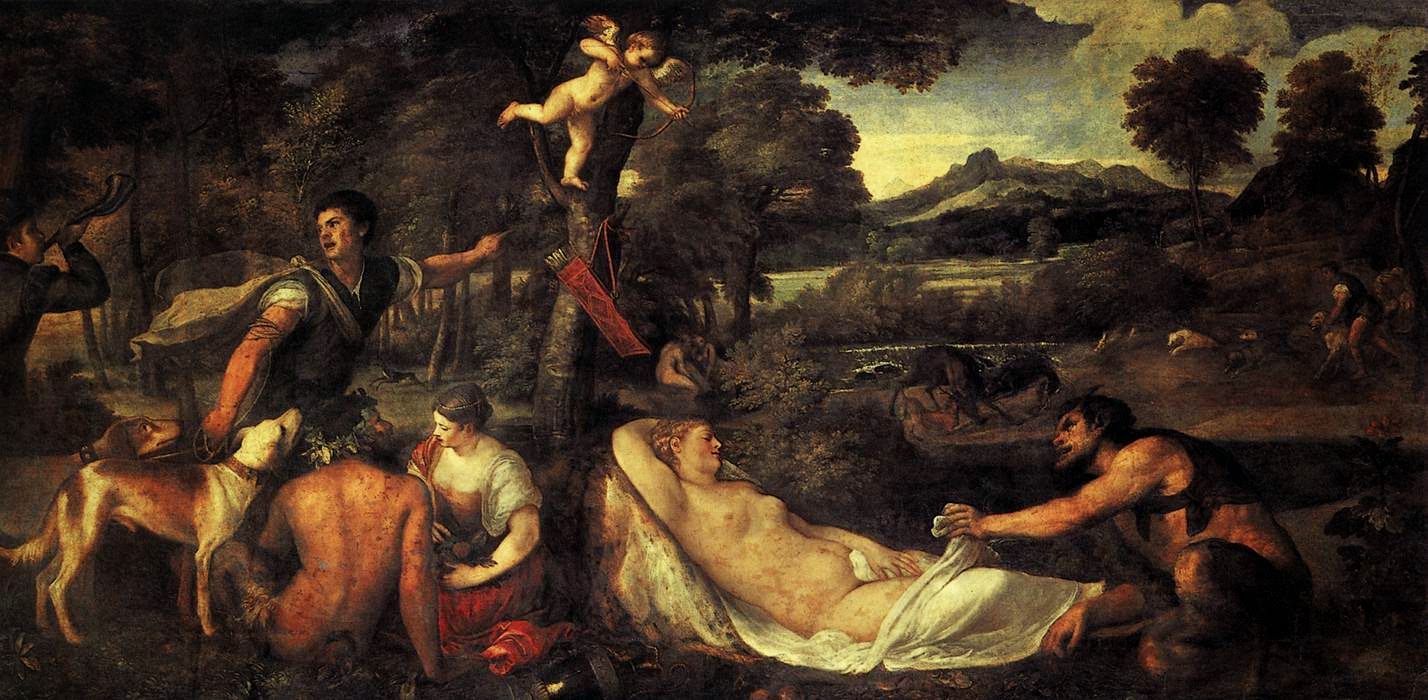 |
| Titian, Jupiter and Antiope (Pardo Venus), 1535-40, reworked c. 1560, Oil on canvas, 196 x 385 cm, Musée du Louvre, Paris. |
Introducing the “Whitehall Group”
The “Whitehall Group” is the convenient name given to the group of collectors, connoisseurs, dealers and agents who were associated with the Stuart court and the seventeenth-century art market. The most famous was Thomas Howard, Earl of Arundel (1585-1646) who was painted by both Rubens and Van Dyck who knew him. By the time the Civil War broke out in 1642, Arundel had been a collector for decades with about 800 paintings and many drawings by renaissance artists of the calibre of Holbein, Leonardo and Parmigianino. Arundel’s father died in the Tower and the son was brought up a Catholic. Enduring a lonely and unhappy childhood, he was lived deep within himself and developed a proud and haughty personality. Not at ease with his contemporaries, or even his wife Aletheia Talbot, daughter of the Earl of Shrewsbury, Arundel fared better with the artists and scholars in his orbit. He was especially fond of Italy which he explored in the company of Inigo Jones. Arundel also travelled to the Low Countries from where he acquired such gems as Sebastiano’s Portrait of Ferry Carondelet and his Secretaries. During the Civil War, Arundel stayed abroad; he raised revenue for the Royal cause, but in effect abandoned the King whom he had never really liked. He was more famous as a collector on the continent than in England which is proved by the fact that books have been written about him in the modern age.[9]
The next famous collector was George Villiers (1592-1628), later 1st Duke of Buckingham. Buckingham owed his position at court not to his birth, but to his looks, which in 1614 caught the roving eye of James I. Amassing money and honours, Buckingham mounted a charm offensive on Charles who much preferred the dashing young duke to the dour Arundel. Buckingham began collecting in the 1610s (late twenties) and within 2 years he began to outclass Arundel, though his collecting career was cut cruelly short by his assassination by a disgruntled subordinate in 1628. Amongst his treasures was Titian’s Ecce Homo (Vienna) which the King of France had desired. Arundel and Buckingham were rivals on many levels, one of which included picture collecting. Friends with Rubens, the painter said of Buckingham’s collection that he had “..never seen such a large number [of fine pictures] in one place as in the royal palace and in the gallery of the late Duke of Buckingham.”
In Francis Haskell’s words, Charles I was the “most conspicuous, but not necessarily the most successful figure.” The King was probably inspired to take up collecting by Buckingham who began at about the same time. They travelled together to Madrid where Charles was able to see an outstanding group of masterpieces. The Infanta’s brother, the 18 year old Philip IV gave Charles Titian’s Venus del Pardo (Louvre) as a gift which also whetted his appetite. Charles had ample opportunities to build up a collection as a king including Raphael’s Holy Family, though he had his blind spots- he didn’t like the art of Veronese nor Northern art.
The last of these mega-collectors was James, 3rd Marquess and later 1stDuke of Hamilton (1606-1649). Hamilton, a great landowner and “an ambivalent collector” (Brown) was in line to the throne of Scotland. In 1623 he was in Charles’s retinue at Madrid, and in the autumn of 1625 he accompanied Buckingham on a diplomatic mission to the Low Countries. Hamilton had no compromising ties through birth or marriage to Catholicism and he was a much more successful collector than a soldier. From Northern Europe Hamilton brought back good paintings for the King, including an “Adam and Eve” by Cranach (sold on the London Art Market). Emboldened by his success, Hamilton competed with Buckingham by renting Wallingford House from the widow of the murdered Duke and began to buy art on a lavish scale competing with Arundel through agents. For Hamilton “picture collecting signified essentially the continuation of politics by other means.” (Haskell, 25). Hamilton’s brother-in-law was posted to Venice as ambassador; and while he wasn’t a great diplomat, he was able to snap up a massive Venetian collection for Hamilton. These included Saint Margaret (Raphael and Studio, Vienna). Most satisfying of all, and even with a worsening political and economic situation, Hamilton was able to keep every single picture from the collection of the Venetian Bartolomeo della Nave, including Giorgione’s Three Philosophers(Vienna) and Antonello’s San Cassiano altarpiece.
The next famous collector was George Villiers (1592-1628), later 1st Duke of Buckingham. Buckingham owed his position at court not to his birth, but to his looks, which in 1614 caught the roving eye of James I. Amassing money and honours, Buckingham mounted a charm offensive on Charles who much preferred the dashing young duke to the dour Arundel. Buckingham began collecting in the 1610s (late twenties) and within 2 years he began to outclass Arundel, though his collecting career was cut cruelly short by his assassination by a disgruntled subordinate in 1628. Amongst his treasures was Titian’s Ecce Homo (Vienna) which the King of France had desired. Arundel and Buckingham were rivals on many levels, one of which included picture collecting. Friends with Rubens, the painter said of Buckingham’s collection that he had “..never seen such a large number [of fine pictures] in one place as in the royal palace and in the gallery of the late Duke of Buckingham.”
In Francis Haskell’s words, Charles I was the “most conspicuous, but not necessarily the most successful figure.” The King was probably inspired to take up collecting by Buckingham who began at about the same time. They travelled together to Madrid where Charles was able to see an outstanding group of masterpieces. The Infanta’s brother, the 18 year old Philip IV gave Charles Titian’s Venus del Pardo (Louvre) as a gift which also whetted his appetite. Charles had ample opportunities to build up a collection as a king including Raphael’s Holy Family, though he had his blind spots- he didn’t like the art of Veronese nor Northern art.
The last of these mega-collectors was James, 3rd Marquess and later 1stDuke of Hamilton (1606-1649). Hamilton, a great landowner and “an ambivalent collector” (Brown) was in line to the throne of Scotland. In 1623 he was in Charles’s retinue at Madrid, and in the autumn of 1625 he accompanied Buckingham on a diplomatic mission to the Low Countries. Hamilton had no compromising ties through birth or marriage to Catholicism and he was a much more successful collector than a soldier. From Northern Europe Hamilton brought back good paintings for the King, including an “Adam and Eve” by Cranach (sold on the London Art Market). Emboldened by his success, Hamilton competed with Buckingham by renting Wallingford House from the widow of the murdered Duke and began to buy art on a lavish scale competing with Arundel through agents. For Hamilton “picture collecting signified essentially the continuation of politics by other means.” (Haskell, 25). Hamilton’s brother-in-law was posted to Venice as ambassador; and while he wasn’t a great diplomat, he was able to snap up a massive Venetian collection for Hamilton. These included Saint Margaret (Raphael and Studio, Vienna). Most satisfying of all, and even with a worsening political and economic situation, Hamilton was able to keep every single picture from the collection of the Venetian Bartolomeo della Nave, including Giorgione’s Three Philosophers(Vienna) and Antonello’s San Cassiano altarpiece.
 |
| Peter Paul Rubens, Thomas Howard, Earl of Arundel, 1629-30, oil on canvas, 67 x 54 cm, National Gallery, London. |
 |
| Peter Paul Rubens, Portrait of George Villiers, First Duke of Buckingham, c. 1625, Oil on canvas, 65 x 50 cm, Galleria Palatina (Palazzo Pitti), Florence. |
_-_Google_Art_Project.jpg) |
| Sir Anthony van Dyck, Portrait of Charles I in Three Positions, c. 1635, oil on canvas, 33 ¼ x 39 ¼ inches, Royal Collection. |
 |
| 1Daniel Mytens I, Duke of Hamilton, 1629, Oil on canvas, 221 x 140 cm, Scottish National Portrait Gallery, Edinburgh. |
The Role of Dealers and Agents
This was an age of international diplomacy when many ambassadors and aristocrats travelled abroad which obviously gave them the opportunity to find and acquire art. The most famous was Sir Dudley Carleton, Viscount Dorchester (1567-1641) who realised that his career might be advanced if he served as art agent for influential people like the Duke of Buckingham since he was, as he wrote in 1617, “by mischance made a master of such curiosities.”[10]As early as 1611 he had been in Venice searching for art for Prince Henry and Lord Salisbury, but both died in 1612 putting an end to his activities in the Venetian art market. Carleton also famously negotiated with Rubens and was friends with Arundel whom he may have met along with Inigo Jones in Venice perhaps between 1613-14. Inevitably, Carleton sought to be of use to Charles I, and to him gave Rubens’s splendid Daniel in the Lions Den, which he obtained as a result of his negotiations with the artist.[11] Mention should also be made of Balthazar Gerbier (1592-1663) who acted as agent for the Duke of Buckingham. Knowledgeable about developments in Spain, France, Italy and the Low Countries, he was called by one scholar the “Duveen of the Seventeenth-Century” because like that modern dealer he was at the centre of the international art market. [12] Then there were roguish dealers like Daniel Nys (1572-) a Flemish dealer whose favourite trick was to move items from consignments and literally sell the buyer short; he successfully deceived Carleton but came unstuck when he tried this on Charles I during the purchase of the Gonzaga collection from Mantua in 1631.[13]Charles refused to pay up and Nys went bankrupt. Another individual involved in the Mantuan sale was Endymion Porter (1587-1649) who is portrayed next to a self-portrait of Van Dyck. A Friend of Gerbier, Porter had “remarkably cosmopolitan” tastes (Haskell). He learnt much during his adolescent years in Spain where he acted as picture dealer on behalf of the King. Also active in the Low Countries, he was responsible for commissioning Van Dyck’s lyrical Cupid and Psyche which conjures up the escapism of the Stuart court through its air of enchanted fantasy. While the dance of art patronage and the musical revels continued at the Stuart court, the volcano of civil unrest, puritanism and war was rumbling far beneath the ground. It would eventually burst asunder with tumultuous consequences for Charles, his courtiers and collecting in England.
Slides
 |
| Michiel van Mierevelt, ca. 1620, Sir Dudley Carleton, 1st Viscount Dorchester, English Ambassador to The Netherlands from 1616 to 1625, oil on canvas, National Portrait Gallery, London. |
 |
| Peter Paul Rubens, Daniel in the Lions’ Den, 1614-16, oil on canvas, 268 x 374.4 cm, National Gallery of Art, Washington. |
 |
| Sir Anthony van Dyck, George Gage and an Unidentified Dealer, (perhaps Sir William Petty?), c. 1622-3, oil on canvas, 115 x 113.5 National Gallery, London. |
 |
| Sir Anthony van Dyck, Cupid and Psyche, 1639-40, oil on canvas, 200.2 x 192.6 cm, Royal Collection. |
- Daniel Mytens, Lord and Lady Arundel in their Sculpture and Picture Galleries, 1616, each oil on canvas, 8 ½ x 50 inches, London, National Portrait Gallery (on loan to Arundel Castle).
- Peter Paul Rubens, Lord Arundel as Earl Marshall, 1629-30, oil on canvas, 50 x 40 inches, Isabella Stewart Gardener Museum, Boston.
- Hans Holbein, Christina of Denmark, Duchess of Milan, 1538, Oil on oak, 179 x 83 cm, National Gallery, London.
- Anthonis Mor, Queen Mary Tudor of England, 1554, Oil on panel, 109 x 84 cm, Museo del Prado, Madrid.
- Titian, Portrait of Philip II, c. 1554, Oil on canvas, 185 x 103 cm, Galleria Palatina (Palazzo Pitti), Florence.
- Quentin Metsys the Younger, Portrait of Elizabeth I (“The Sieve Portrait”), Pinacoteca Nazionale, Siena Italy.
- Quentin Metsys, St John Altarpiece, 1507-08, Oil on wood, 260 x 504 cm, Koninklijk Museum voor Schone Kunsten, Antwerp.
- Correggio, The Education of Cupid, about 1528, Oil on canvas, 155 x 91,5 cm, National Gallery, London.
- Isaac Oliver, Henry, Prince of Wales, c. 1612, watercolour on vellum laid on card, 13.2 x 10.0 cm, Royal Collection.
- Palma Giovane, Prometheus, 1570-1607, oil on canvas, 184. X 160.6 cms, Royal Collections Trust.
- Peter Paul Rubens, Thomas Howard, Earl of Arundel, 1629-30, oil on canvas, 67 x 54 cm, National Gallery, London.
- Wenceslaus Hollar, (After ) Sir Anthony van Dyck, Inigo Jones, 1640, engraving, Royal Collection.
- Hans Holbein, Sir Richard Southwell, 1536, Oil on wood, 47.5 x 38 cm, Galleria degli Uffizi, Florence.
- Adam Elsheimer, The Finding of the Cross, c. 1603-5 (frame modern), Städelsches Kunstinstitut, Frankfurt am Main.
- Same without frame.
- Peter Paul Rubens, Portrait of George Villiers, First Duke of Buckingham, c. 1625, Oil on canvas, 65 x 50 cm, Galleria Palatina (Palazzo Pitti), Florence.
- Andrea della Sarto, Pietà, Kunsthistorisches Museum, c. 1520, oil on wood, 99 x 120 cm, Kunsthistorisches Museum, Vienna.
- Peter Paul Rubens, Portrait of the Artist, 1623, oil on canvas, 85.7 x 62.2 cm, Royal Collection.
- Sir Anthony van Dyck, Portrait of Charles I in Three Positions, c. 1635, oil on canvas, 33 ¼ x 39 ¼ inches, Royal Collection.
- Titian, Jupiter and Antiope (Pardo Venus), 1535-40, reworked c. 1560, Oil on canvas, 196 x 385 cm, Musée du Louvre, Paris.
- Daniel Mytens, Charles I (when Prince of Wales), 1623, oil on canvas, 204 x 130.1 cm, Royal Collection.
- Orazio Gentileschi, Joseph and Potiphar's Wife, 1626-30, Oil on canvas, 204,9 x 261,9 cm, Royal Collection, Windsor.[14]
- Caravaggio, The Death of the Virgin, 1602-06, Oil on canvas, 369 x 245 cm, Musée du Louvre, Paris.
- Daniel Mytens I, Duke of Hamilton, 1629, Oil on canvas, 221 x 140 cm, Scottish National Portrait Gallery, Edinburgh.
- David Teniers, Picture Gallery of Archduke Leopold William of Austria, 1651, oil on canvas, 123 x 163 cm, Kunsthistorisches Museum, Vienna.
- Raphael and Workshop, St Margaret, oil on wood, 192 x 122 cm, Kunsthistorisches Museum, Vienna.
- Michiel van Mierevelt, ca. 1620, Dudley Carleton, 1st Viscount Dorchester, English Ambassador to The Netherlands from 1616 to 1625, oil on canvas, National Portrait Gallery, London.
- Peter Paul Rubens, Daniel in the Lions’ Den, 1614-16, oil on canvas, 268 x 374.4 cm, National Gallery of Art, Washington.
- Peter Paul Rubens, A lioness, 1614-16, British Museum, black and yellow chalk, with gray wash, heightened with white bodycolour, 39.6 x 23.5 cm.
- Sir Anthony van Dyck, The Painter with Sir Charles Cottrell and Balthasar Gerbier, 1645, oil on canvas, Albury Park, Guildford.
- Sir Anthony van Dyck, Sir Endymion Porter and the Artist, 1632-41, Oil on canvas, 110 x 114 cm, Museo del Prado, Madrid.
- Sir Anthony van Dyck, George Gage and Companions, c. 1622-3, oil on canvas, 115 x 113.5 National Gallery, London.
- Sir Anthony van Dyck, Nicholas Lanier, oil on canvas, Vienna, Kunsthistorisches Museum.
- Raphael, The Holy Family (“La Perla”), 1518-20, oil on wood, 114 x 115 cm, Prado, Madrid
- Anthony van Dyck, Cupid and Psyche, 1639-40, oil on canvas, 200.2 x 192.6 cm, Royal Collection.
[1]For an introduction, see the first part of Richard L. Williams, “Collecting and Religion in Late-Sixteenth-Century England” in The Evolution of English Collecting: Receptions of Italian Art in the Tudor and Stuart Periods, (ed) Edward Chaney, Studies in British Art, Yale University Press, 159-201.
[2]For a brief summary of painters and Henry VIII, see Erna Auerbach, Tudor Artists, (London, 1954).
[3] On the fortunes of the picture see Elizabeth Goldring, “An Important Early Picture Collection: The Earl of Pembroke’s 1561/2 Inventory and the Provenance of Holbein’s “Christina of Denmark”, Burlington Magazine, Vol. 144, No. 1188, (Mar 2000), 157-160. The Christina was nearly lost, but luckily the National Gallery was able to buy it- with the aid of an anonymous donor- from Colnagi for £72,000; see Flaminia Gennari Santori’s essay in Saved! 100 Years of the National Art Collections Fund, Richard Verdi and others, 2003, 92-97.
[4] On the Titian picture, thought to be Philip II, see Charles Hope, “Titian, Philip II and Mary Tudor” in England and the Continental Renaissance, Essays in Honour of J.B. Trapp, (ed) Edward Chaney and Peter Mack, (Boydell Press, 1990), 53-67.
[5] Auerbach, Tudor Artists, 103.
[6]For the comparison between Elizabethan controls and Spanish connoisseurship, see David Haworth, “The Royal Portrait: The Tudors” in Images of Rule: Art and Politics in the English Renaissance, 1485-1649, (University of California Press, 1997), 77-119, 102. Velasquez was not infallible because he de-attributed a Correggio that was actually painted by the artist, his Education of Cupid, today in the N.G.
[7] On the Cecils and Italian art, See Susan Bracken, “The Early Cecils and Italianate Taste” in The Evolution of English Collecting. For an overview of English collecting and Italian art, see Edward Chaney’s lengthy introduction to that volume.
[8]Haworth, Images of Rule, 106.
[9]The most important book on Arundel is the Holbein scholar, Mary F. S. Hervey’s The Life, Correspondence and Collections of Thomas Howard Earl of Arundel, (Cambridge University Press, 1921). More recently has appeared David Haworth’s Lord Arundel and His Circle, (Yale University Press, 1985).
[10]See Oliver Millar, ex cat., The Age of Charles I: Painting in England 1620-1649, (Tate, 1972), no. 6. And Robert Hill, “The Ambassador as Art Agent” in The Evolution of English Collecting, 241-251.
[11]For drawings associated with it, see John Rowlands, Rubens: Drawings and Sketches, (1977), nos 68-70.
[12]Stone, “The Market for Italian Art”, (reply to Francis Haskell), Past and Present, 1959, Nov, 1992-4.
[13]On Daniel Nys the “layman-dealer”, see Jonathan Brown, Kings and Connoisseurs: Collecting Art in the Seventeenth Century Europe, (Yale University Press, 1995), 230-1.
[14]See no 10 in Orazio Gentileschi at the Court of Charles I, (London, NG, 1999).







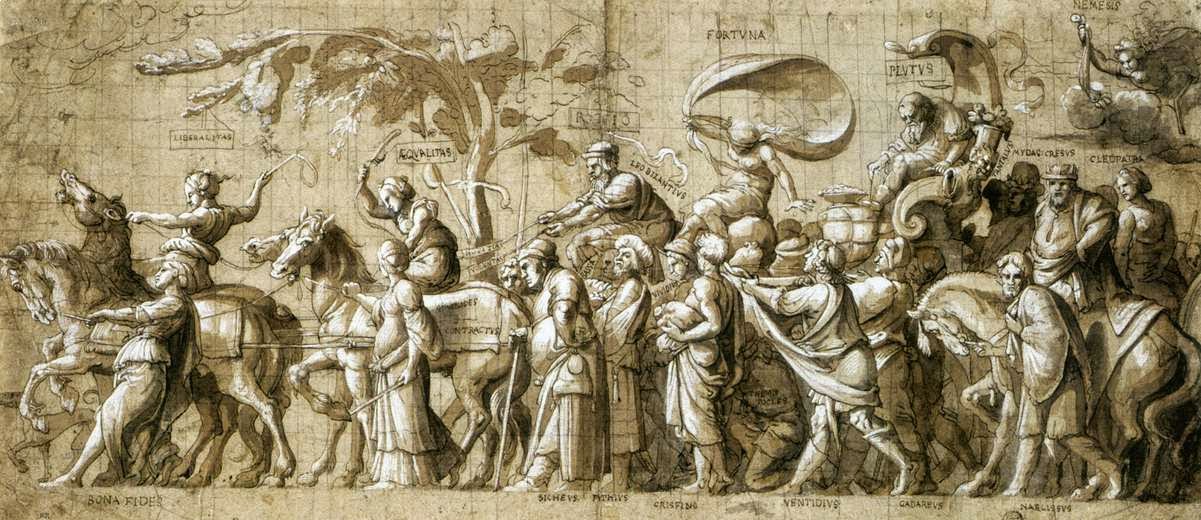
.jpg)




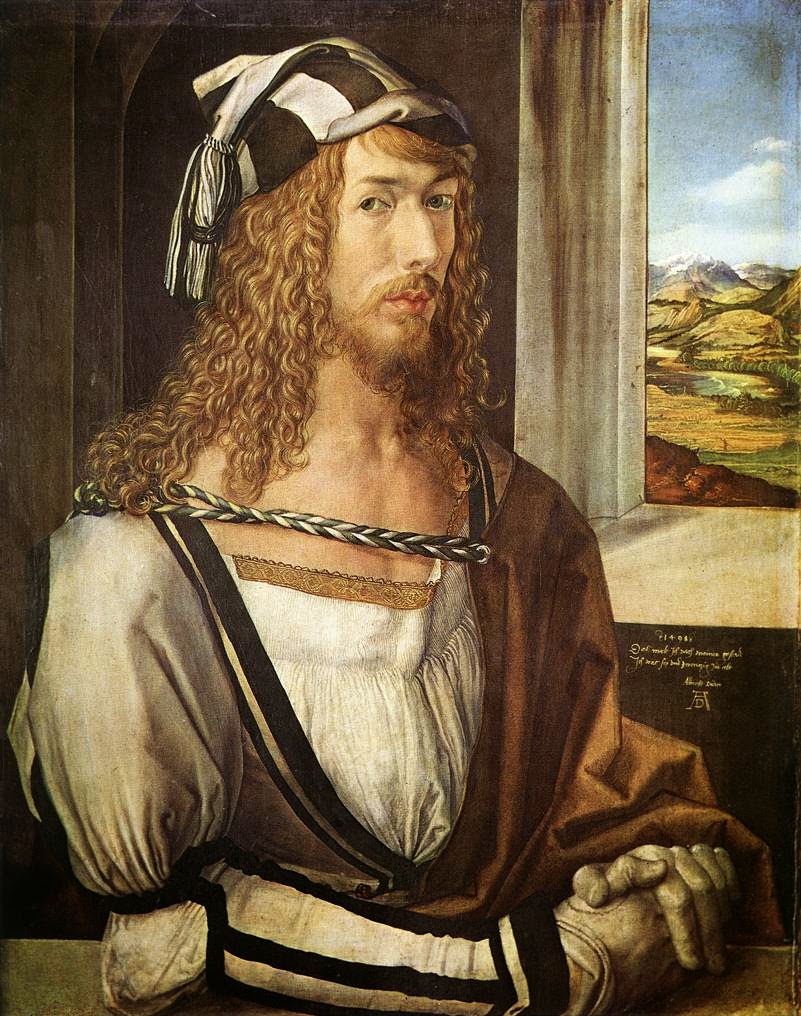





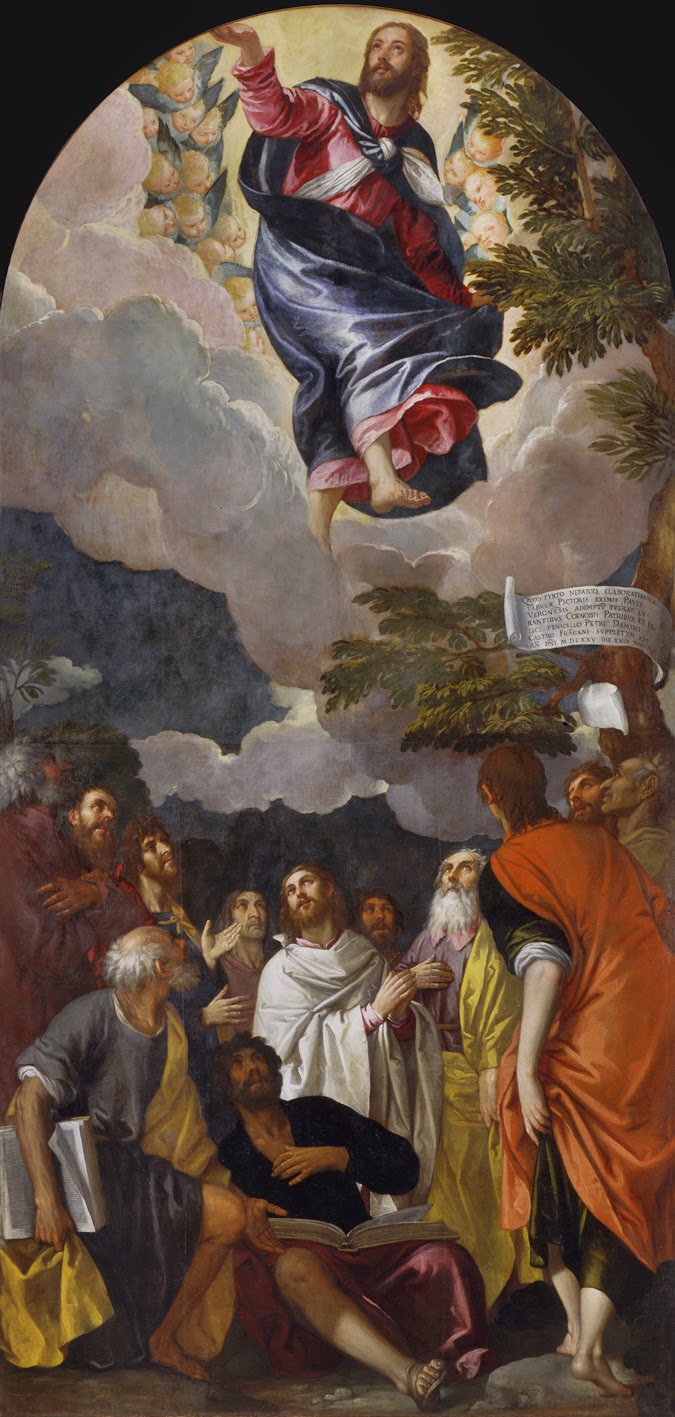

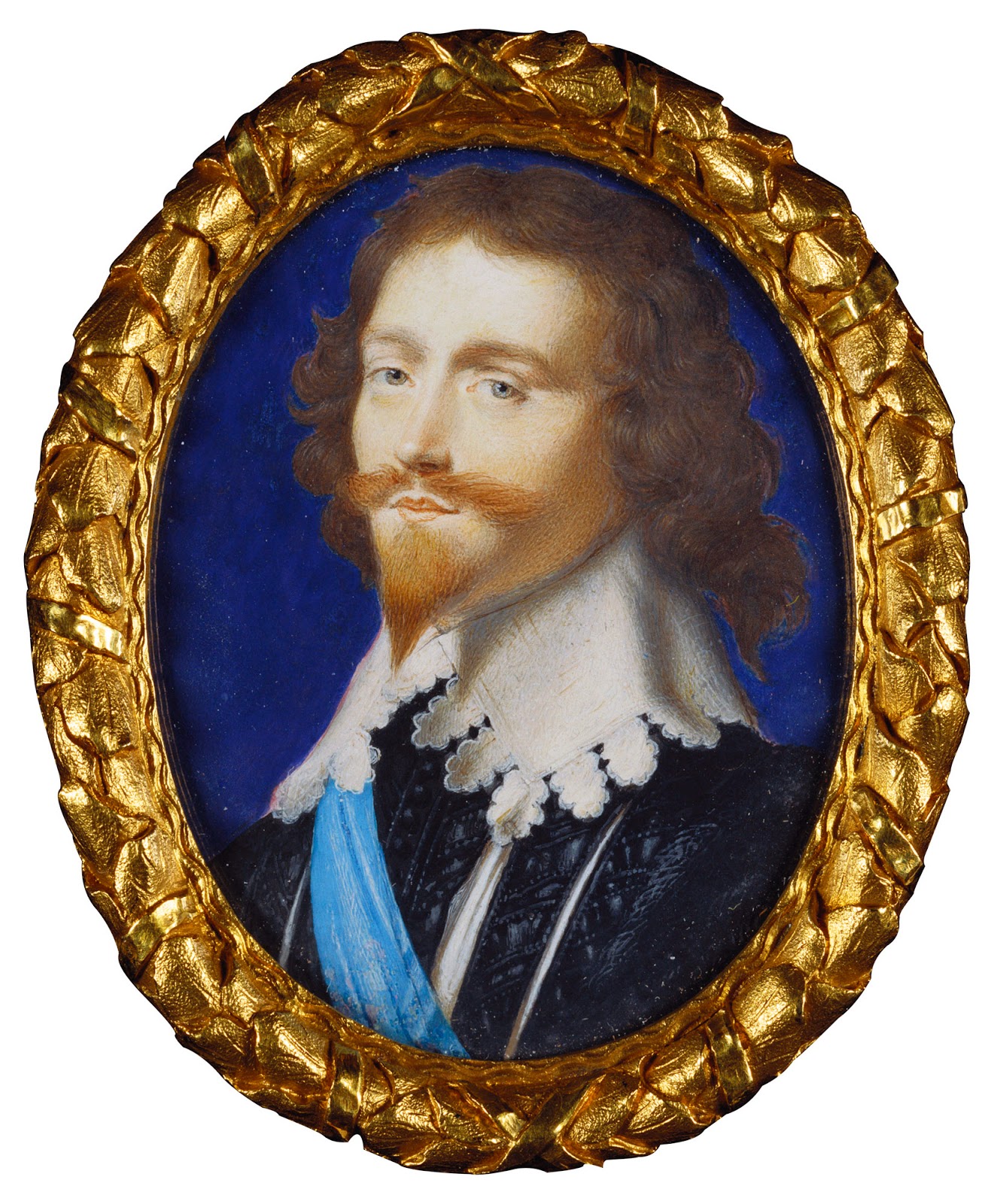

























.jpg)


.jpg)








































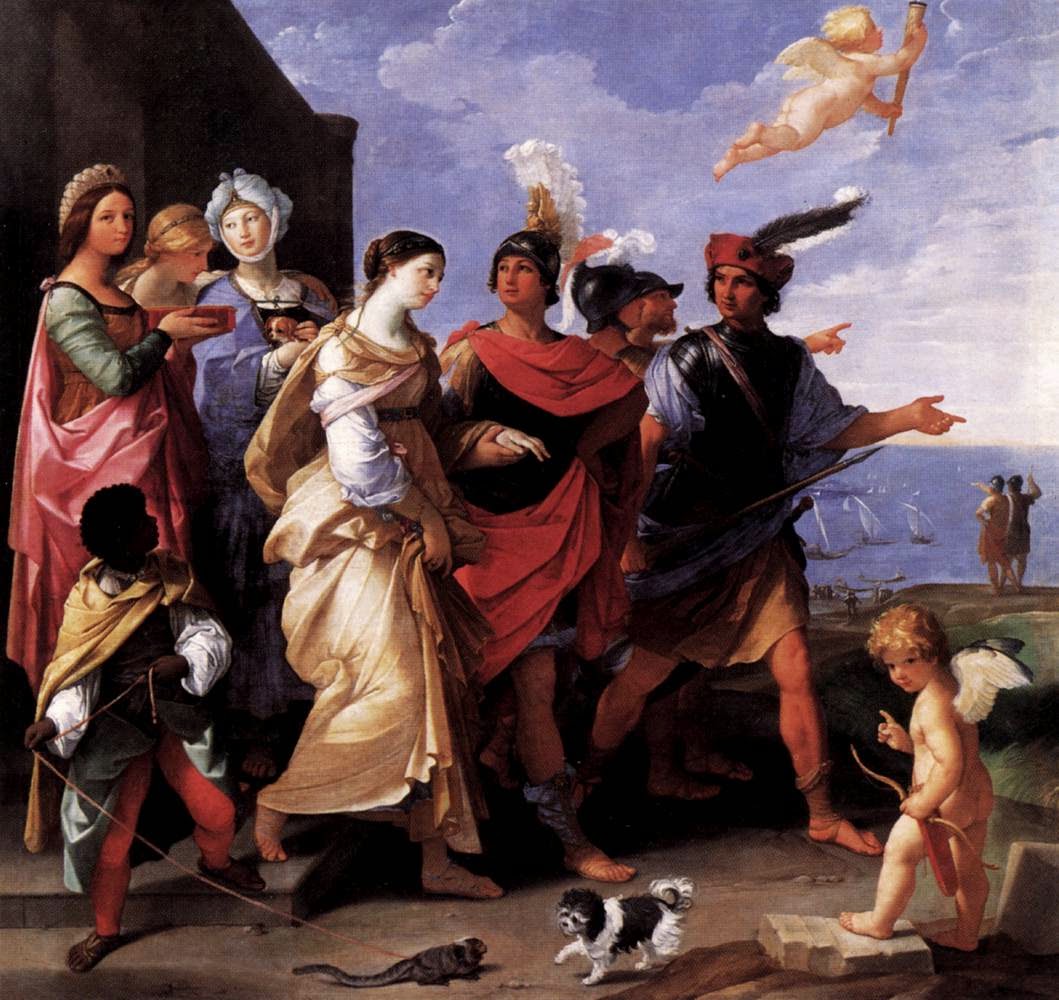



.jpg)







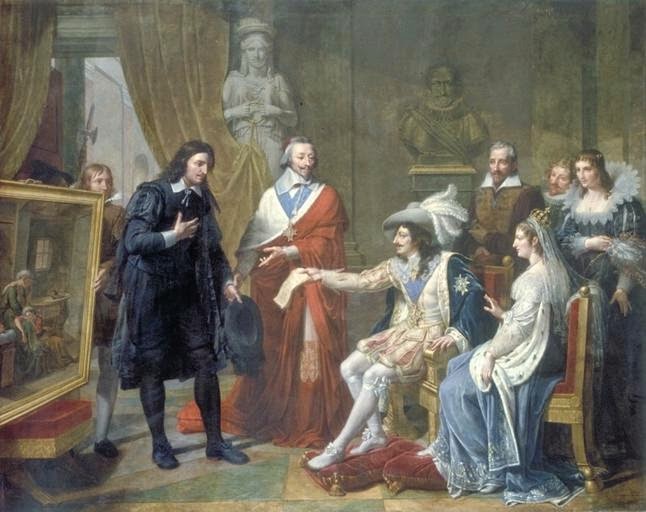












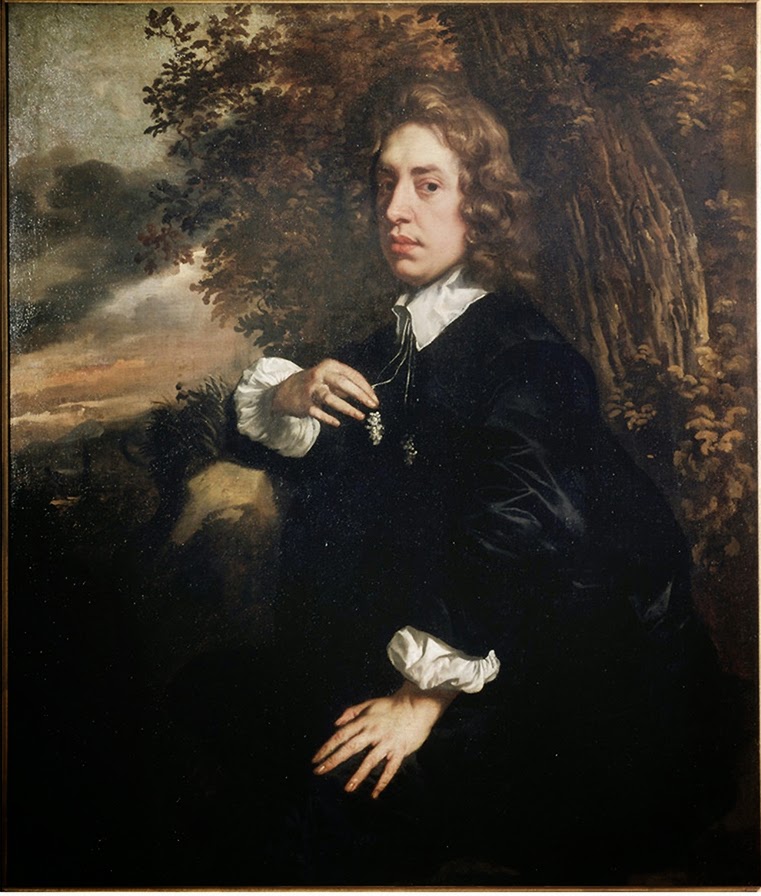



_Virgin-and-Child-between-St.-Justine-and-St.-George%2C-with-a-Benedictine-monk.jpg)
















%2C_Kunst-_und_Rarit%C3%A4tenkammer_(1636).jpg)







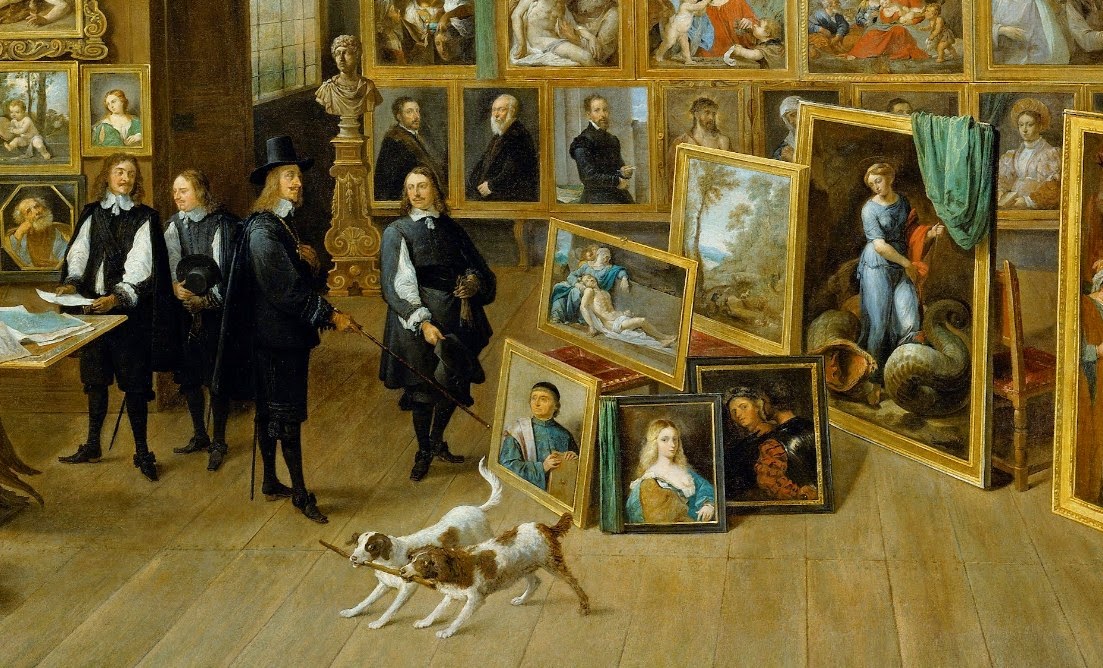
.jpg)


_-_Google_Art_Project.jpg)

























